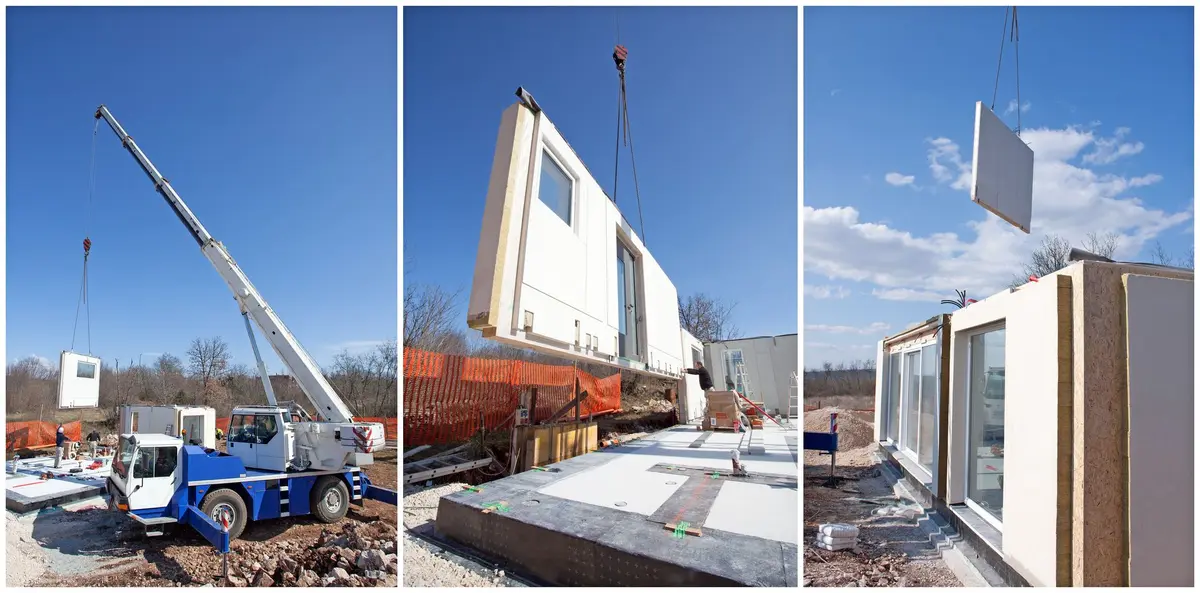Vienna: Modular Thinking in Urban Development
Vienna, Austria, is one of the most active cities in Europe in experimenting with urban modular construction. In particular, the Aspern Seestadt district is applying industrialized, modular construction methods to a mixed-use development combining housing, office space, and public buildings. The Podhagskygasse housing complex is a prime example, built using factory-fabricated wooden modules assembled on-site and completed in approximately nine months. This complex is highly regarded for its ability to be dismantled and rebuilt after ten years of use, simultaneously embodying sustainability and circularity. Vienna's approach is significant in that it extends modular architecture beyond mere housing solutions to become a key element of a flexible urban development strategy.
Sweden: Industrialization and Sustainability Combined
Sweden is considered one of the most systematically industrialized countries in modular construction. Leading company Lindbäcks operates a large wooden modular factory in Piteå in the north of the country, producing thousands of residential modules annually on an automated line. Another example is BoKlok (Skanska x IKEA), which mass-produces standardized wooden modular homes to address middle-class housing needs.
Furthermore, modular construction is emerging as a key driver of eco-friendly construction in Sweden, with the introduction of the "Climate Declaration (Klimatdeklaration)" system for new buildings starting in 2022. The advantages of this method are clear. By assembling modules precisely manufactured in the factory on-site, construction errors are reduced, and the overall construction period can reportedly be shortened by 30-50%. Furthermore, construction site waste is reportedly reduced by more than half compared to conventional methods, and the utilization of a wood-based structure significantly reduces embodied carbon emissions. However, there are limitations. Depending on the size and weight of the modules, meticulous transportation and installation planning is required, and technical management, including ensuring fire and acoustic performance at on-site joints, is essential.
Global Momentum and Market Growth
Market size forecasts show that modular construction is growing rapidly globally, beyond Europe. Globally, the market is expected to grow at a compound annual growth rate of approximately 6%, from approximately $104 billion in 2024 to $140.8 billion in 2029. In the Asia-Pacific region alone, the market is projected to expand from approximately $43 billion in 2025 to approximately $71.2 billion in 2032. Another study projected that the region could grow at a compound annual growth rate of approximately 8.7%, from approximately $36.1 billion in 2024 to approximately $59.3 billion in 2030.
Asia: From Singapore’s Vertical Modules to Korea’s Smart Cottages
Singapore, in particular, is considered one of the most active countries in Asia in experimenting with modular technology. The government-led Prefabricated Prefinished Volumetric Construction (PPVC) program has enabled modular construction even in high-rise buildings, and the project dubbed the world's tallest modular residential building has already been completed. Given the city-state's limited land and high labor costs, this strategic move maximizes construction speed and efficiency.
This trend has recently spread to the Korean market. The government has decided to expand the adoption of modular construction methods to rental housing in Sejong and the Seoul metropolitan area, and domestic companies are also moving quickly. LG Electronics unveiled a modular housing model called "Smart Cottage," embarking on an experiment in creating a smart living space that combines its AI appliances with the Internet of Things (IoT). Samsung C&T is also developing "Off-Site Construction" technology, conducting research to apply factory-based construction to residential and commercial buildings. Modular construction, which enables shorter construction periods, stable quality, and low-carbon construction, is being recognized as a new growth engine in Korea.





